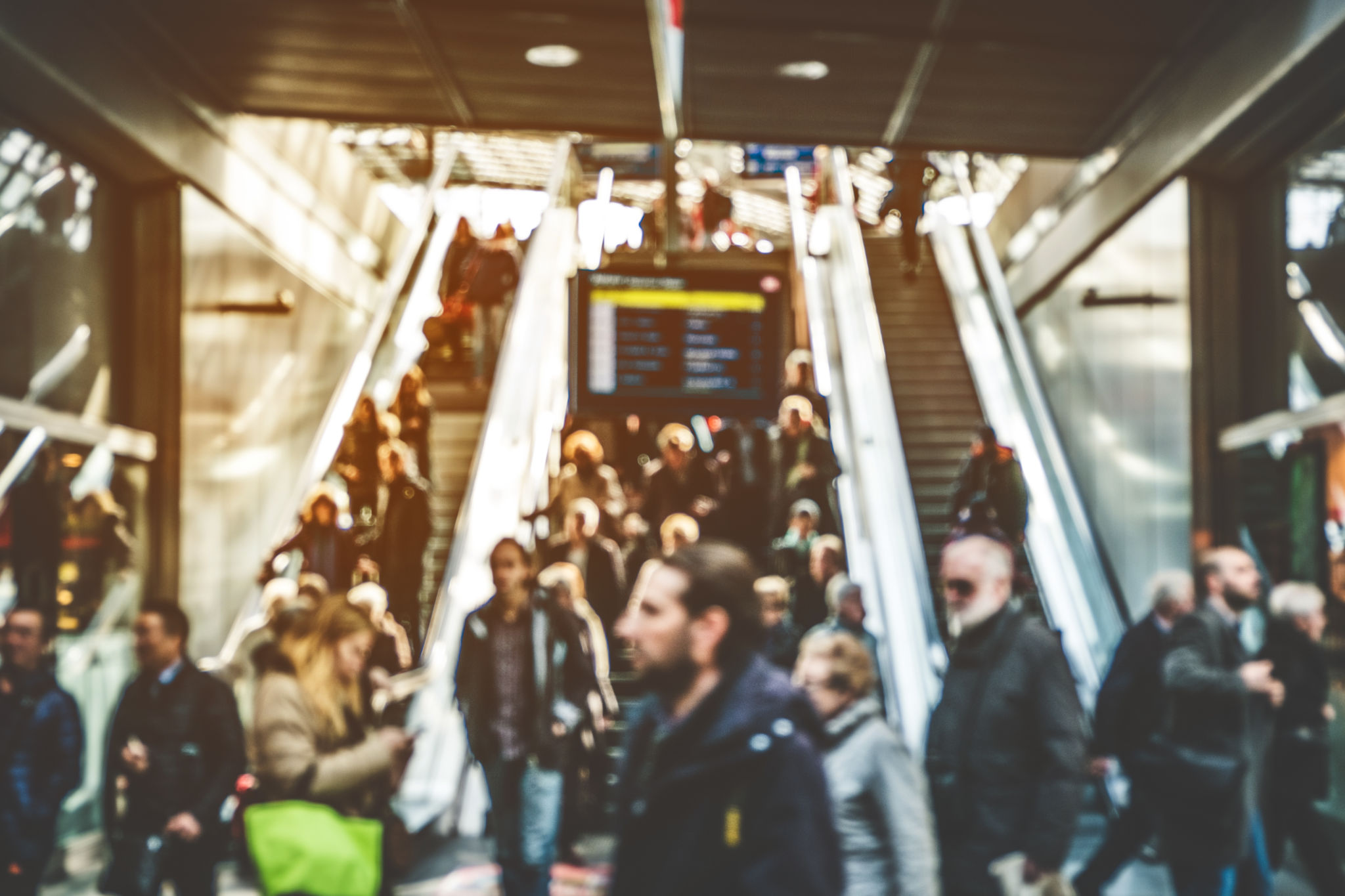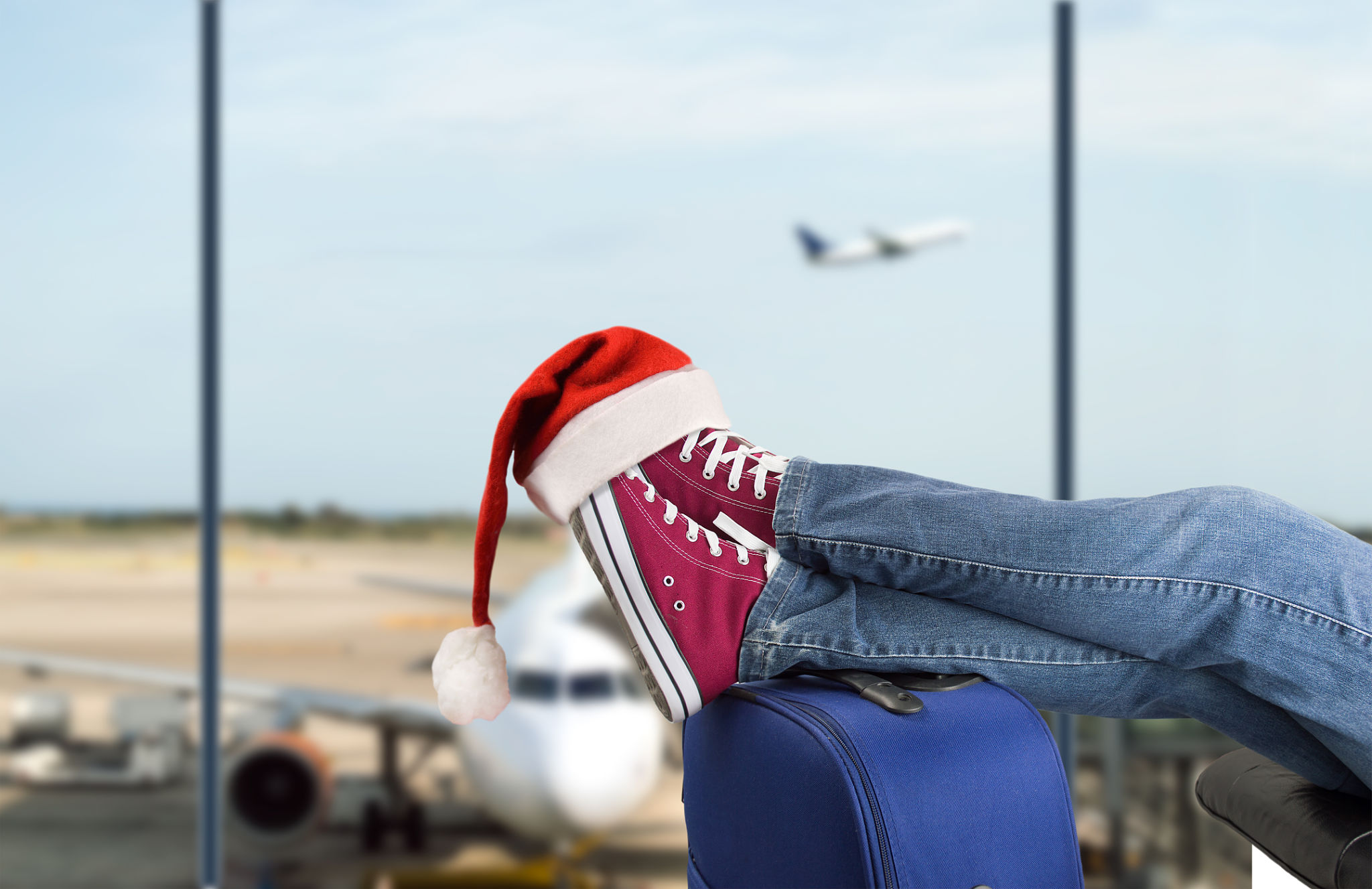Traveling during the Holidays with your Service Dog
Al
How to Train Your Service Dog for Air Travel: Tips and Techniques
Training your service dog for air travel can seem daunting, but with patience and the right preparation, you can set both yourself and your dog up for success. Flying with a Psychiatric Service Dog (PSD) requires more than just basic obedience training; it requires specialized preparation for a variety of environments, from airports to crowded planes. Here's a comprehensive guide on how to train your dog for flying and make the holiday season as smooth as possible.
1. Start Dog Training Early: The Power of Early Socialization
If possible, begin training your dog for air travel as early as possible, ideally during their early socialization period (before 4 months old). Puppies are highly receptive to new experiences, and early exposure to different environments and sounds can significantly reduce their stress levels later on.
However, if your dog is older, don’t worry—you can still train them to be comfortable flying and traveling in public spaces. Consistency and gradual exposure to new situations are key.
2. Training for Public Transportation: Cars and Buses
Before your dog ever sets foot on an airplane, it’s essential to expose them to various forms of transportation to help them get used to the movements and noises they will encounter during flights.
- Cars: Start by getting your dog used to traveling in a car. Use positive reinforcement to encourage calm behavior when the car is stationary, and gradually introduce them to movement. Begin with short rides, and slowly build up to longer journeys.
- Other Forms of Transit: Expose your dog to other moving environments such as buses, trains, and even bicycles. Start by sitting near a bus stop or train station to let your dog get used to the sounds and movements. If possible, take short rides on public transit to help them adjust.

3. Preparing for the Airport Environment
Airports are bustling, chaotic spaces that can be overwhelming for both humans and dogs. The key is to desensitize your dog to the sights, sounds, and smells they’ll encounter at the airport.
- Rolling Luggage: One of the most common sources of anxiety for dogs in airports is rolling luggage. Start by bringing a suitcase into your home and rewarding your dog for calm behavior around it. Once your dog is comfortable with a stationary suitcase, begin rolling it around and rewarding them for staying calm.
- Airport Visits: Visit the airport during off-peak hours to expose your dog to the sights and sounds of the terminal. Practice walking through the crowds and walking with a suitcase to simulate the experience of navigating busy spaces. The more familiar your dog is with the environment, the more relaxed they’ll be when the real journey begins.
4. Training for Security Screening
The security screening process at airports is one of the most stressful aspects of flying with a service dog. It’s essential to train your dog to tolerate the various steps involved, including the pat-downs and passing through metal detectors.
- Pat-down Training: Start by allowing friends or family members to gently pat down your dog while offering treats as a reward. Gradually increase the intensity of the pat-down until your dog is comfortable with the process.
- Metal Detector Training: Teach your dog to walk calmly through a metal detector. You and your service dog will need to go through the security metal detector separately. Direct your dog to “sit and stay” in a designated area while you proceed through the security metal detector. Once you have cleared the security metal detector, direct your dog to walk through the security metal detector to you.
5. Preparing for the Flight
Once your dog is comfortable with various forms of transportation and the airport environment, it’s time to focus on the flight itself.
- Airport Seating: Start by training your dog to lie down underneath a seat in a stationary environment (e.g., a chair in your living room).
- Simulating Flight: If possible, visit an airport or use a bus or other transportation system to simulate the feeling of being in an airplane. Dogs won’t know they are up in the air, but they will feel the vibrations and hear loud noises, so it’s important to acclimate them to these sensations beforehand.
- Calming Techniques: Bring along your dog’s favorite calming tools, whether it’s a blanket, a chew toy, or a Kong stuffed with treats. The goal is to make the flight as stress-free as possible by providing them with familiar, comforting items.
6. Behavioral Training for Specific In-Flight Tasks
Throughout the flight, your dog will need to remain calm and in a specific position for the duration of the trip. It’s essential to teach your dog to:
- Remain in Place: Practice teaching your dog to stay in one spot for long periods. You can use positive reinforcement to encourage your dog to lie down and remain calm during the flight. One way to practice a long stay is to go to the movies with your service dog.
- Distractions: It’s important that your dog is able to handle distractions during the flight, such as other passengers, food smells, and the general noise of the cabin. Regular practice with distractions in training will help ensure your dog remains focused on you during the flight.
7. Post-Flight Training
Once you arrive at your destination, the journey isn’t over. Traveling can be tiring for both you and your dog, so it’s important to continue practicing and reinforcing good behavior.
- Stretching and Movement: After a long flight, allow your dog to stretch their legs and relieve any tension. You can practice simple obedience tasks or give them some playtime to help them unwind. A lot of airports have an outdoor animal relief area just outside the terminal that is helpful.
- Reinforce Good Behavior: Continue reinforcing good behavior throughout the trip, offering rewards and praise whenever your dog is calm and follows commands.

Traveling on Lyft / Uber
When traveling to and from airports or other destinations with your service dog, ride-sharing services like Lyft and Uber are often the most convenient options. However, navigating these services with a service dog can sometimes be tricky. Follow these tips to ensure your journey goes smoothly:
Order the Ride
Start by ordering your Lyft or Uber ride as usual. Once your ride is accepted, send a message to the lyft driver to inform them that you’ll be traveling with your service dog. This puts your request in writing, which can help avoid misunderstandings when you arrive.
Ask the Driver to Adjust the Front Seat
For your dog’s comfort and safety, ask the uber driver to pull the front passenger seat all the way forward to provide extra space in the back seat. This gives your dog enough room to settle comfortably, especially if they’re larger.
Bring a Towel or Sheet
Service dogs can shed, so bringing a towel or sheet to lay on the floor helps protect the vehicle’s interior and reduces the amount of dog hair that might accumulate. It's a considerate gesture for both the driver and your dog.
Instruct Your Dog to “Tuck”
Once you're in the car, instruct your dog to sit or "tuck" in between your feet on the floor. This position keeps them out of the way of the driver and reduces the likelihood of distractions during the ride. If your dog isn’t used to car travel, practice this behavior at home before your trip so they’re familiar with the routine.

Holiday Travel Tips: Traveling with a Service Animal
Training your service dog for flying and air travel is a gradual process that requires patience and consistency. Start early, expose your dog to different environments, and always prioritize positive reinforcement to help them become confident and comfortable with each stage of the journey. With the right preparation, you and your service dog will be ready to take on any travel challenges together.
